10. The Ironman Triathalon
Arguably the world’s most famous one-day endurance event, the Ironman World Championship is a true test of all-around ability and fortitude. To complete the famed race in Kona, Hawaii, competitors must swim 2.4 miles, bike 112 miles, and then run 26.2 miles. And before you can even think about racing Kona, you need to qualify by posting a top time at a different Ironman event. “Finishing [Ironman Kona] gives you something to hang your hat on for the rest of your life,” says Kevin Mackinnon, managing editor of Ironman.com. “The winds are insane, the heat is unbearable, and when you put that together with competing against the fittest athletes on the planet, it just doesn’t get any tougher.”
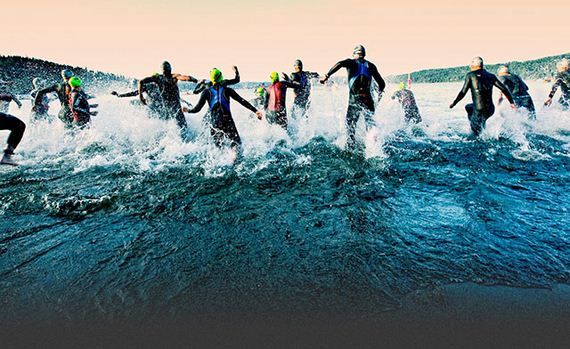
9. Hardrock 100
Forty-eight hours may seem like a pretty generous amount of time to finish this 100-mile race. But add in altitude sickness, headaches, and knee-crushing terrain, and the Hardrock, which has been held in the San Juans near Silverton, Colorado, each July since 1992, gets pretty grueling. The loop includes 33,992 feet of ascent and descent, the most of almost any ultramarathon in the world. Since the average runner takes 41 hours to finish, most have to run through the night at elevations where temps can drop below freezing, navigating scree-covered slopes by headlamp. Being above treeline for most of the course, racers are also vulnerable to lightning and freak storms.
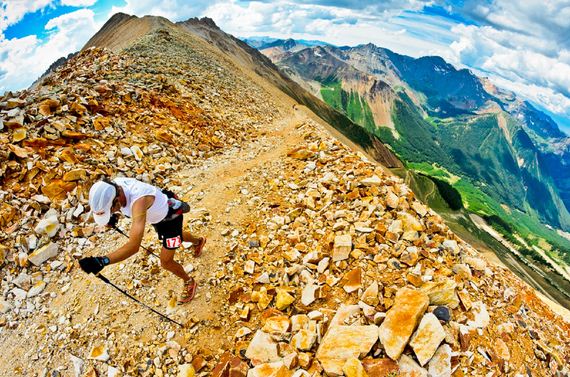
8. Jungle Ultra Marathon
Peru’s Jungle Ultra is mostly downhill, dropping 10,500 feet from the cloud forest down into the Amazon over its 142.6-mile course. But underestimate it, and you’re in for a world of hurt. The five-stage, self-supported race winds its way through utterly remote terrain, where temperatures hover over 90 degrees, the humidity is brutal, and hordes of biting bugs are just waiting to make you their lunch. Along the way, participants wet their feet in 70 tropical rivers and streams, in some cases zip-lining over them.
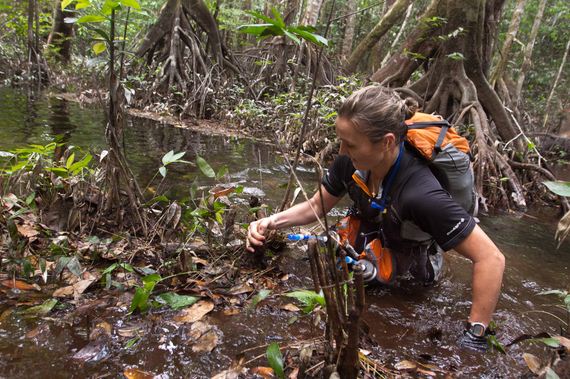
7. Race Across America
From Oceanside, California, teams and solo-riders pedal 3,000 miles to Annapolis, Maryland, climbing 170,000 along the way. The winners average about 22 hours a day on their bikes (which equates to about 250 to 350 miles per day), in order to complete the ride under the 12-day limit. The shortest qualifying race for the RAAM is 375 miles long, so expect to spend a few years getting to the starting line.
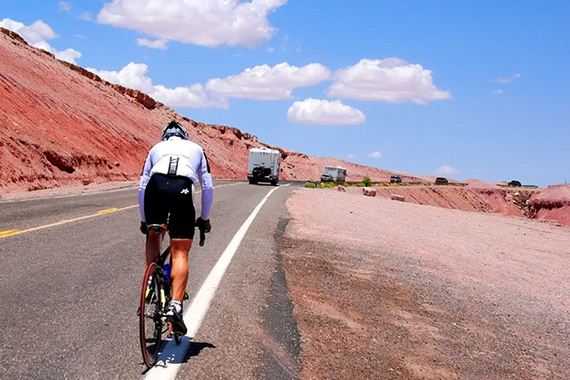
6. The Barkley Marathon
The Barkley Marathon held at Frozen Head State Park, Tennessee is a 161km run, but that’s not the hard part. It’s the staggering 18,000 metre climb that causes problems; well, that and the fact that there isn’t one of those fancy pants “trails” for you to follow. Oh, and there are tons of thorns and briars, collapsed trees are everywhere, and it tends to rain. A lot.
Since 1986 about 700 people have attempted the annual marathon, but only 11 have finished under the 60 hour time limit. The cut-off time seems harsh considering the course record is 55 hours and 42 minutes; you’d think that just letting people complete this gruelling event would be challenging enough. But if it’s too much for you, you could always try the 97km “fun run” instead. You get 40 hours for that light-hearted adventure!
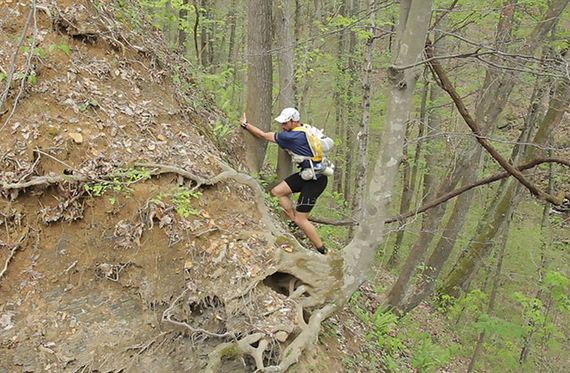
5. Iditarod
Contenders in the Iditarod Trail Invitational run, bike, sled, or ski their way across 1,000 miles of Alaskan snow in February. They have a maximum time limit of 30 days to finish and must carry their own supplies. The long stretches of uninhabited terrain can take days to cross, so participants must be self-sufficient when it comes to personal supplies and navigation—GPS devices are prohibited. The race alternates each year between two routes: the northern and southern. Course records are 10 and 17 days, respectively. Temperatures can drop to minus 50 degree Fahrenheit. To cope with the extreme cold, participants need to consume extra calories and take extra precautions, such as covering their entire bodies when they sleep to avoid frostbite. Results vary widely depending on the weather and the field. In 2012 conditions were so bad that no participants finished the thousand miles. But in 2014, 16 people finished—the largest group in race history.
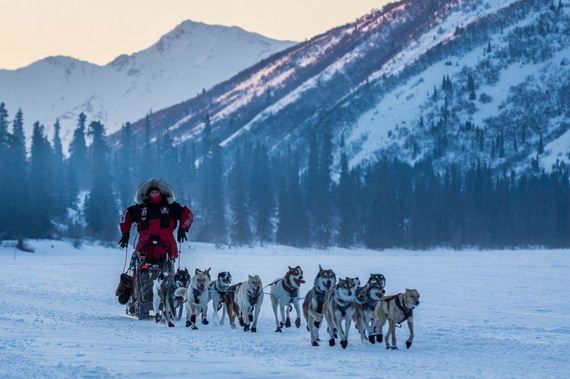
4. Ultra Trail du Mont Blanc
With more cumulative ascent than the height of Mount Everest, this non-stop 103 mile mountain marathan that traverses three countries and includes 10 mountain passes is famous for not only attracting the best trail runners in the world, but also breaking some of them.
In fact, this race is so popular that you have to qualify by collecting points from previous ultra marathons. And even then, it’s not just a lottery to see if you’ll get an entry, but whether you’ll actually manage to finish. Although it has a generous sounding 46hr cut off, there’s no time to sleep.
Only 67 participants successfully earn the coveted The North Face UTMB finishers gilet.
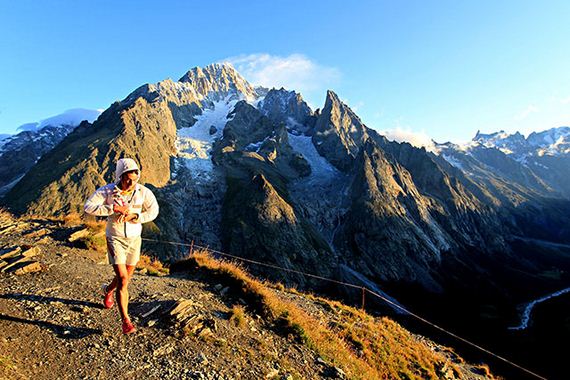
3. Marathon des Sables
Often referred to as the ‘Toughest footrace on the planet’, over a thousand runners congregate in the desert for what could be described as the grand national of multi-stage ultra marathons – the Marathon des Sables. Competitors run a marathon for six consecutive days, carrying all their food and supplies with them.
The race is broken into several stages with time limits for each one. Organizers have scattered mandatory checkpoints with water along the way to ensure runners stay hydrated.
Cut-off times are generous and medical support second to none – but take more than two IV drips and you get disqualified.
Even with the safety measures in place, runners still run the risk of getting lost. In 1994, Mauro Prosperi lost his way in a sandstorm and wandered alone for about 125 miles. He survived by eating bats and drinking his own urine before rescuers found him nine days later and more than 30 pounds lighter.
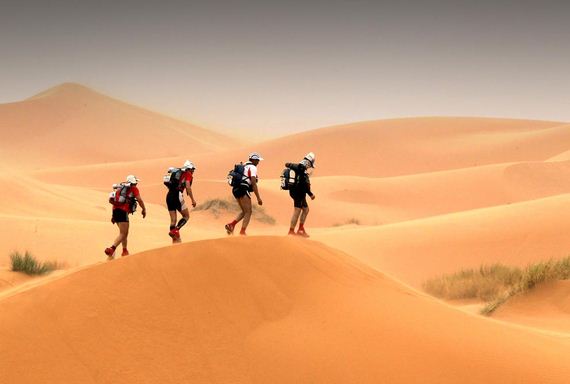
2. Badwater UltraMarathon
This invitation-only event was first conceived as a way of connecting the lowest and highest points in the contiguous United States: California’s Death Valley (elevation -282 feet) and Mt. Whitney (summit elevation 14,505 feet). The Badwater Ultramarathon is a 135-mile, summer race from Death Valley (280 feet below sea level) to the trailhead of Mount Whitney (almost 8,300 feet above sea level). Temperatures reach around 130 degrees Fahrenheit, while asphalt bakes to nearly 200, hot enough to force runners to race on the road’s white lines or risk their shoes melting. Every 15 minutes, support crews douse the racers with ice water to prevent overheating. At the age of 67, Badwater legend Arthur Webb finished his tenth consecutive race in 2009.
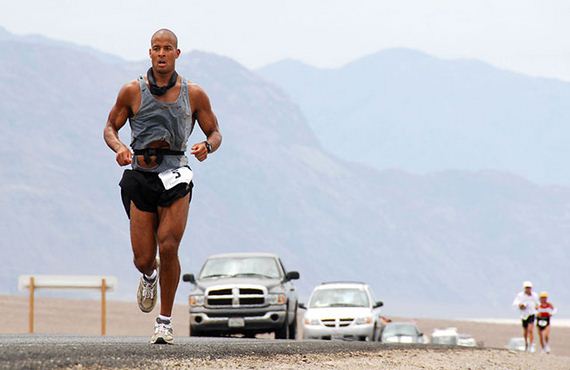
1. 6633 Ultra
When a race describes itself as the ‘Toughest, Coldest and Windiest Extreme Ultra Marathon on the Planet’ you know it’s not going to be particularly pleasant. Even if you choose the paltry 120 mile version over the hard-as-nails 350 mile mammoth yomp, the non-stop and self sufficient 6633 Ultra will still succeed in spitting out the toughest of endurance athletes.
With a fully laden pulk and in sub zero temperatures, competitors run/shuffle along the Dempster highway, almost exactly crossing the Arctic Circle, at a latitude of 66 degrees and 33 minutes (hence the name). Your only chance of sleep and rest is at one of the checkpoints – which happen to be 26 to 70 miles apart.
How tough is the 6633? “It is flippin tough. I mean really tough. No seriously, I really do mean it”, says its founder, Mike Likey.
Only 11 people have successfully completed the 350 mile race in its six year history.
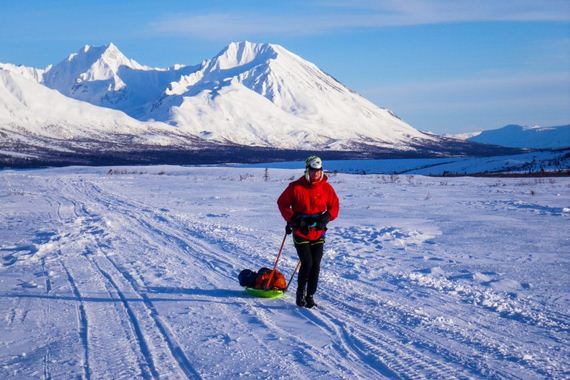
 Barnorama All Fun In The Barn
Barnorama All Fun In The Barn